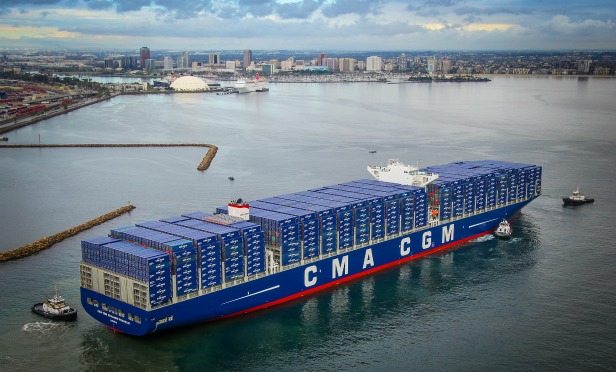 The first quarter of the year was the second busiest in the Port of Long Beach history. From January to March, the port moved 1.8 million TEUs of cargo. This significant cargo volume is second only to the first quarter of 2018, which was the busiest first quarter in port history. The strong activity is a reflection of the strong economy, even as some sentiment is shifting around the economy.
The first quarter of the year was the second busiest in the Port of Long Beach history. From January to March, the port moved 1.8 million TEUs of cargo. This significant cargo volume is second only to the first quarter of 2018, which was the busiest first quarter in port history. The strong activity is a reflection of the strong economy, even as some sentiment is shifting around the economy.
“Our trade is always a reflection of the consumer-driven U.S. economy. The dollar is strong, we're experiencing one of the longest periods of growth in history and unemployment is low,” Mario Cordero, executive director at the Port of Long Beach, tells GlobeSt.com. “The demand for goods has been resilient.”
Warehouses are having trouble keeping up with the increased cargo volumes. Industrial vacancy rates are at record lows already, and the increased cargo volumes put more impact on the market. “It's fair to say that warehouses have been bursting at the seams with cargo shipped early to beat anticipated tariff hikes,” says Cordero. “As a seaport, we are not really seeing impacts because the supply chain has become adept at managing inventory. For example, ocean carriers are limiting their capacity by having at least 11 skipped or voided voyages in March.”
Lunar New Year falls during the first quarter, making the strong cargo activity particularly impressive. This year, Lunar New Year fell in early February. Cargo activity surged in January, per usual, and slowed in early February during the holiday. In addition to Lunar New Year, cargo volumes also surged in expectation of tariffs. “Businesses are considering the threat of tariffs in their planning, and we've been seeing a lot of cargo brought in early since late last year,” says Cordero. “December was the Port's second-busiest month in our history, and January was the second-busiest opening month.”
The threat of tariffs is producing a lot of uncertainty, making it difficult for the port to predict cargo volumes this year. “If the United States and China reach a long-term agreement, then cargo will be able to flow through the Port on a more predictable pattern,” says Cordero. “A steady and predictable trade policy contributes to a steady and predictable product flow. I remain optimistic the United States and China will resolve their differences soon and the normal flow of commerce will resume, benefiting consumers and businesses on both sides of the Pacific.”
Overall, the Port of Long Beach predicts modest growth for the year at 1.8% above cargo volumes in 2018. “The Port is going to work with our many stakeholders, as we always do, to ensure the fast, predictable and reliable movement of cargo our customers expect, something I call operational excellence,” says Cordero.
© Touchpoint Markets, All Rights Reserved. Request academic re-use from www.copyright.com. All other uses, submit a request to [email protected]. For more inforrmation visit Asset & Logo Licensing.






